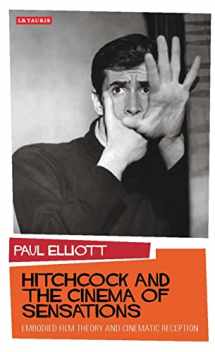
Hitchcock and the Cinema of Sensations: Embodied Film Theory and Cinematic Reception (International Library of Visual Culture)
ISBN-13:
9781848855878
ISBN-10:
1848855877
Author:
Paul Elliott
Publication date:
2011
Publisher:
I.B.Tauris
Format:
Hardcover
288 pages
FREE US shipping
Book details
ISBN-13:
9781848855878
ISBN-10:
1848855877
Author:
Paul Elliott
Publication date:
2011
Publisher:
I.B.Tauris
Format:
Hardcover
288 pages
Summary
Hitchcock and the Cinema of Sensations: Embodied Film Theory and Cinematic Reception (International Library of Visual Culture) (ISBN-13: 9781848855878 and ISBN-10: 1848855877), written by authors
Paul Elliott, was published by I.B.Tauris in 2011.
With an overall rating of 3.6 stars, it's a notable title among other
books. You can easily purchase or rent Hitchcock and the Cinema of Sensations: Embodied Film Theory and Cinematic Reception (International Library of Visual Culture) (Hardcover) from BooksRun,
along with many other new and used
books
and textbooks.
And, if you're looking to sell your copy, our current buyback offer is $0.37.
Description
When we talk of ""seeing"" a film, we do not refer to a purely visual experience. Rather, to understand what we see on screen, we rely as much on non-visual senses as we do on sight. This new book rethinks the body in the cinema seat, charting the emergence of embodied film theory and drawing on developments in philosophy, neuroscience, body politics and film theory. Through the prism of Alfred Hitchcock's films, we explore how our bodies and sensual memory enable us to quite literally 'flesh out' what we see on screen: the trope of nausea in Frenzy, pollution and smell in Shadow of a Doubt, physical sound reception in the Psycho shower scene and the importance of corporeality and closeness in Rear Window. We see how the body's sensations have a vital place in cinematic reception and the study of film.


We would LOVE it if you could help us and other readers by reviewing the book
Book review

Congratulations! We have received your book review.
{user}
{createdAt}
by {truncated_author}


